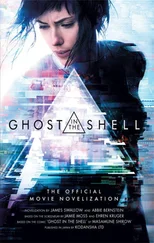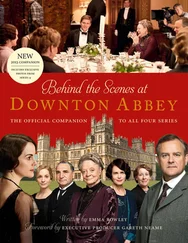“This will come close to breaking the law,” Nat almost whispered. “It will attract a whole new group of people. Some might not be addicts, just users.”
LJ tried not to show excitement. How was it that this youngster could come to him offering the holy grail of emporiums, to bring users among the addicts? Could it be real? LJ smiled, realizing he had nothing to lose.
It took some weeks before word got out that you could hear a live musician at the Veiled Woman. The crowds began to grow slowly and virtually none of the new clientele threw up on themselves or passed out in a puddle of their own urine. The Proprietor was able to hire a young woman to clean when Nat was onstage, where he began to spend most of his time.
It’s inevitable that a place that attracts people who use and abuse drugs is frequented by a fair amount of artists in general and musicians in particular. The VW was no different. There were even musicians or ex-musicians who admitted, albeit cryptically, that they had experience with the guitar. Some even admitted to owning an instrument themselves and praised Nat for being brave enough to go “public” even if it was in a place the authorities were unlikely to disturb. One particularly wizened woman whose spine curved over her thin straight legs and reminded Nat of a question mark was still agile enough to roll on her back while playing the guitar, could play the instrument behind her head and behind her back and pluck solos with her teeth.
She also had theories about why music sounded different north of the Caribbean, how one set of white people had sent families to take over the land from the people they found there versus how another group of whites had sent mostly soldiers, young men who would be away from “home” for years.
“Sex. Everything’s different when you know the sex in the music,” she said at the end of her lectures on the Caribbean Divide in the music.
Though he could speculate on the meaning of this, he decided it was not as important as learning as much music from her as he could in the time she had left on the planet.
There was another deadline pressure building slowly that was wholly unknown and perhaps unknowable as far as Nat and millions like him were concerned. Nat saw the tip of the iceberg on a battered, half-broken hand screen the Old Woman had scammed from a desperate addict. She had dropped the screen rushing to the latrine. It began a story about a heretofore unemployed Scientist who had found a way to make a living by curing mostly rich people of the earworm problem from the odd pink bird. The Scientist cured the earworm by putting those who had it into a deeper sleep than they had had since childhood. The earworm left by the odd pink bird began to fade with the first treatment. By the third session of deeply induced sleep, their minds were clear of the obnoxious repeated sound.
“Good for them,” Nat thought, as the Old Woman returned, looking relieved.
What Nat didn’t know, the part of the story that was developing far below the screens, was what else the Scientist was doing with the people he cured. He was scanning their brains to try to understand, as any appropriately curious person would, why these particular people had been susceptible to the earworm in the first place.
This is where the news story became odd. In fact, it didn’t seem quite like a news story. He couldn’t quite place it.
“…and this is where the findings differ. Researcher Dimear spoke at length on his personal memories of people performing music onstage aided only by mechanical amplification and sometimes not even that.”
“What one recalls is the lack of power and effectiveness of the so-called live performances versus…”
Here, the screen failed for moment. Then there was another media person speaking.
“…modern tools that Ellington or Mozart would not only have praised but would have used themselves. It would have let them open up deeper parts of their work. I almost laughed when these folks claimed some connection between the earworm and live music…”
The Old Woman put her hand on his head. “Get off that damn screen, fool. Ain’t nothin’ but shit on there.”
“But you finagled your way into one.”
“I’m old. They cain’t change me. You want to wind up with them wires in your head so you cain’t never turn it off or you want to make some music? You let me know.”
* * *
Nat was able to persuade the Old Woman to perform with him, much to the delight of the users, the addicts, and, as the crowd grew, total nonusers. The addicts were in fact being crowded out even as Nat and the Old Woman performed songs of the great Tommy Johnson, whose repertoire she’d been reluctant to cover given the audience’s substance abuse.
“What you wanna learn that shit for? He was just like these fools we play for.”
Cryin’ mama, mama mama
Know canned heat killin’ me…
If canned heat don’t kill me
I won’t never die
With Nat going full time to performance, LJ made the Girl who was a part-time cleaner a full-time cleaner and increased everyone’s pay. This proved useful in paying for the fines and food and uniforms when the authorities arrived and took the performers to jail for unlicensed live performance.
Nat had been only vaguely aware of the laws designed to keep things a certain way. The way his lawyer eventually explained, the “Safe Distance” statute was that the world was becoming more crowded and so it didn’t do to excite large crowds of people. Live music, especially live “popular” music derived from the blues, tended to get people excited, unlike even with the most spectacular events and specials. Very large crowds could walk away from holograms and go relatively quietly into the night.
None of it really made any sense to Nat. He’d known all along that he was doing something illegal or at least close to being illegal. But he had no clear idea why it was illegal and the lawyer’s explanation did little to clear that up. People who had come to hear him and the Old Woman were moved by the music of Robert Johnson, Blind Lemon Jefferson, and Charlie Patton, and, as crowds had done centuries ago, synchronized their movements to the music, somewhat akin to the way performers did in holograms these days. But no one was overly excited. In fact, the addicts became, if anything, more contemplative, if one can use that term to describe people whose mental states didn’t allow much bladder control.
The non-addicts did tend to get a bit loud, the older ones shouting requests and the younger ones clapping and stomping to the beat. But it was only a little wild, and the fact that it had gone on for some months had led Nat to believe that it would go on as long as LJ opened the doors and made sure the addicts used designated lavatories. LJ even moved his observation booth from the raised floor area and gave it over completely to Nat and the Old Woman.
Nat had felt especially good about the news gram pick-ups. This, he thought, would confer legitimacy. What it did was to no longer allow the authorities to ignore them even if they were much lower priority than serious criminal enterprises such as the Urban Food Alliance or the Anti-Poverty Association suspected of hacking and entering bankers’ homes and coercing them into all manner of subversion. Even with such goings on, there was still, somehow, news screen time and prosecution resources for an undereducated, mostly self-taught musician playing the work of people who had been but a generation or so removed from the auction block. There was also still plenty of room for him in the prisons.
* * *
The smell of the prison, the sound and the drained color, all hit Nat at once. There had been one room, a processing room that clearly at one time had been as clean as the medical facilities of the rich. Only the light colors of the walls remained. It was the room where they were inoculated, supposedly, against the hazards of their assigned jobs.
Читать дальше












